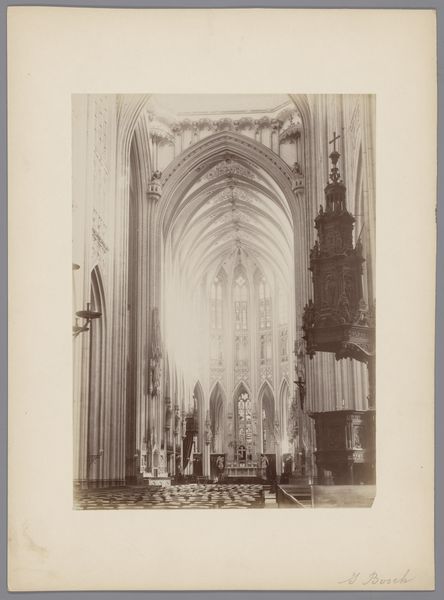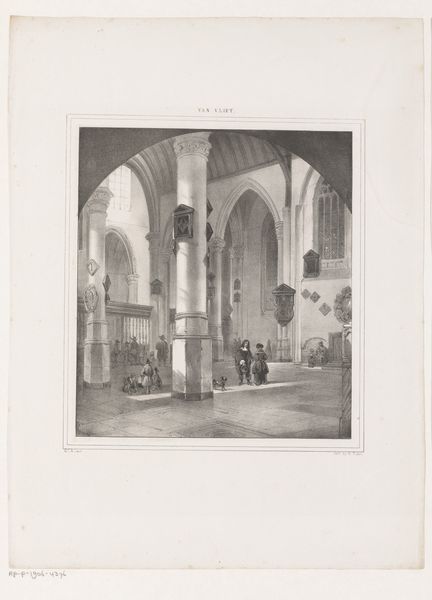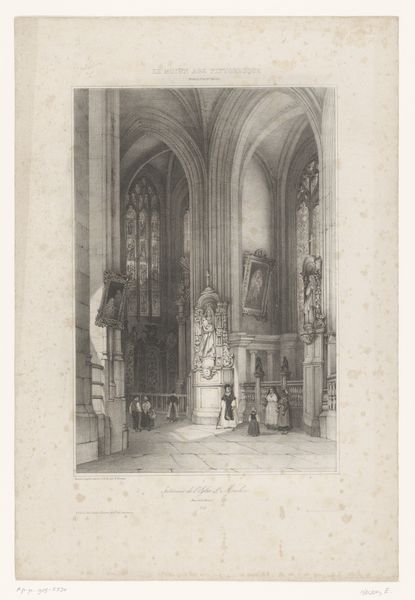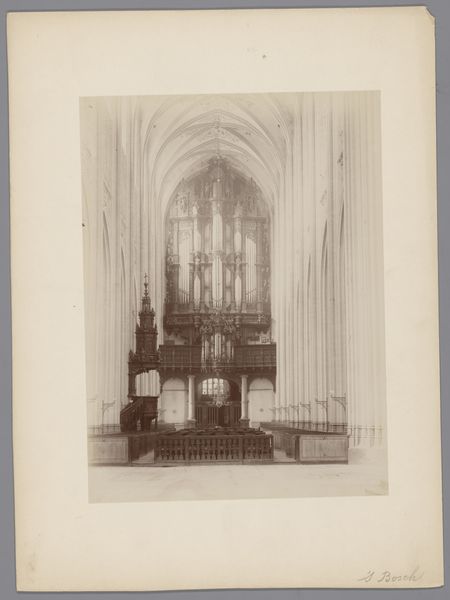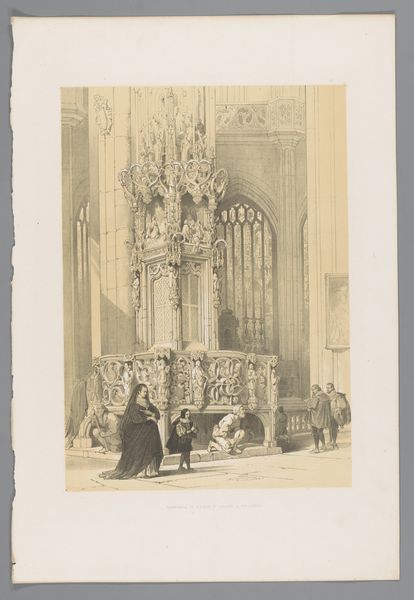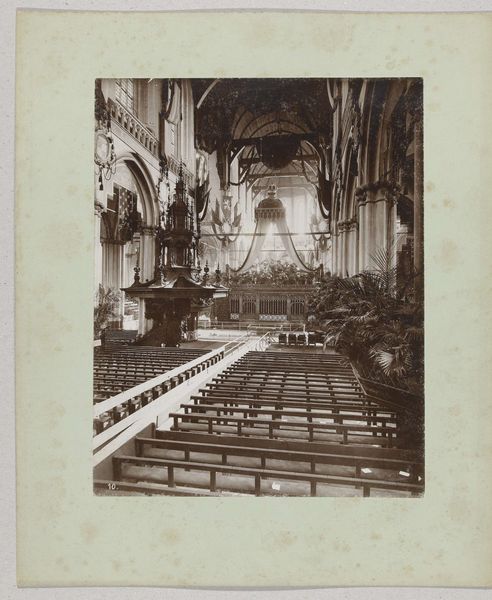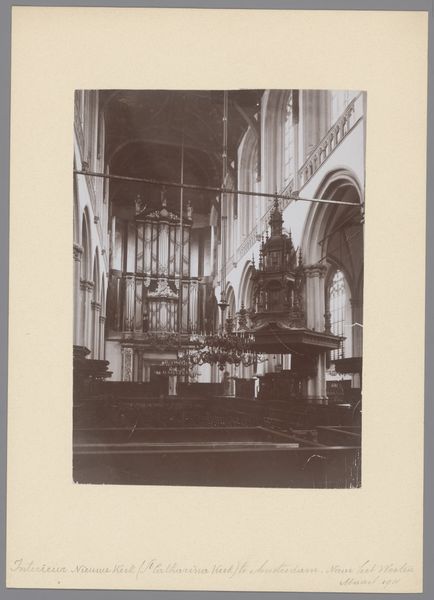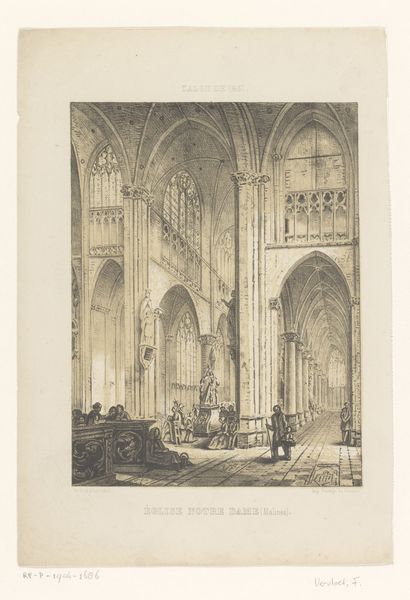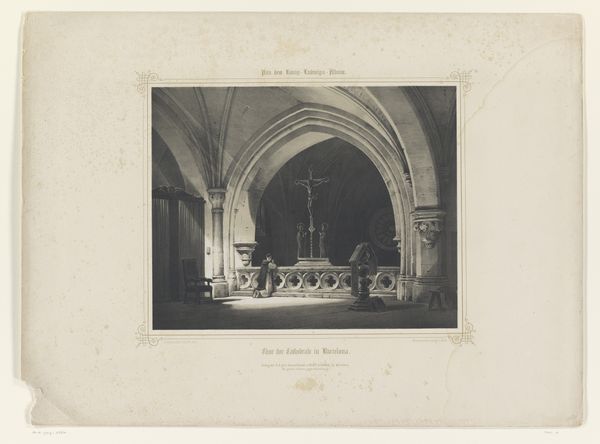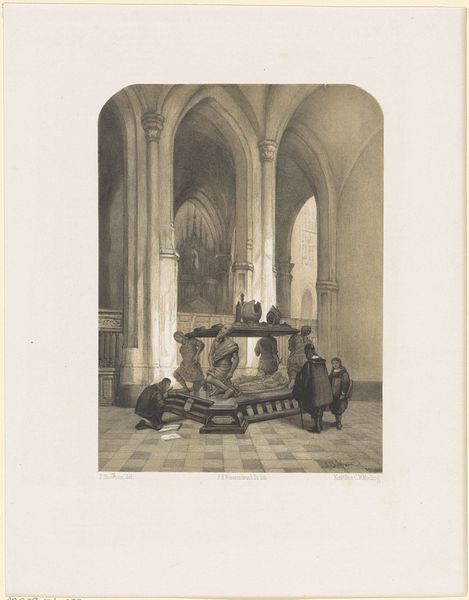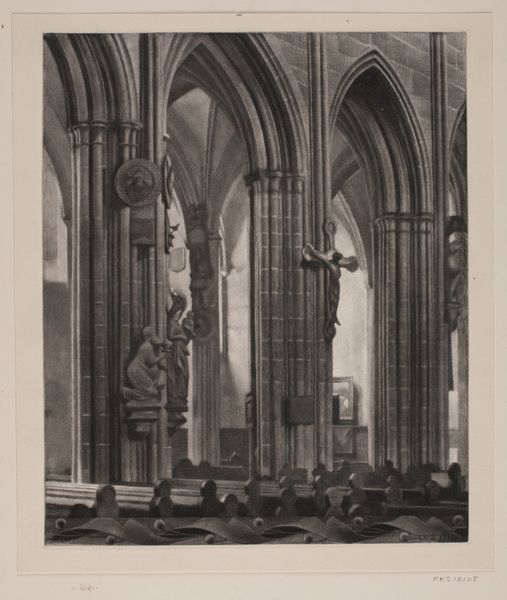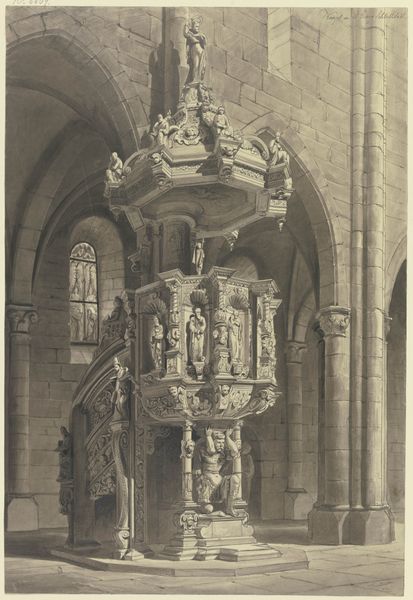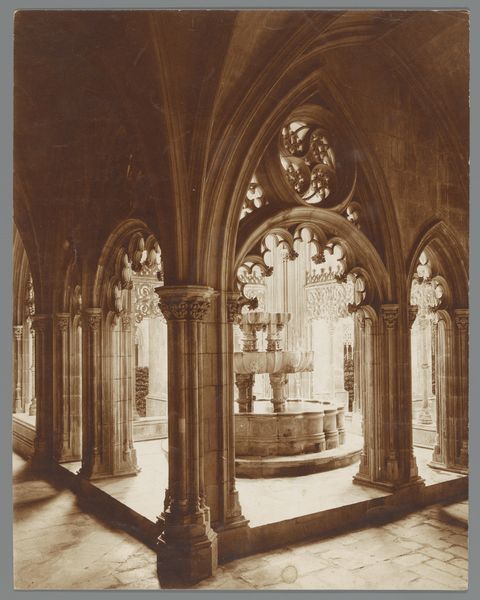
Grafmonument voor Engelbrecht II, graaf van Nassau-Dillenburg-Breda, 1504 1824 - 1847
0:00
0:00
print, engraving
#
portrait
#
neoclacissism
# print
#
history-painting
#
engraving
Dimensions: height 583 mm, width 450 mm
Copyright: Rijks Museum: Open Domain
This print, made by Frederik Lodewijk Huygens in the 19th century, shows the tomb of Engelbrecht II in the Grote Kerk in Breda. It's a monochrome print, meaning it’s made in shades of a single color, likely created using lithography, a printing technique that allows for detailed reproduction. Huygens, instead of opting for traditional fine art techniques, has chosen a process rooted in reproduction, more akin to the world of commercial printing. The materiality of lithography influences the appearance of the artwork, lending it a graphic quality with its smooth surfaces and fine lines. The choice of this method reflects a modern sensibility, embracing industrial materials and processes rather than the handcrafted approach traditionally associated with fine art. In doing so, Huygens blurs the boundaries between high art and craft, inviting us to consider the social and cultural significance of printmaking in an era of mass production and consumption.
Comments
No comments
Be the first to comment and join the conversation on the ultimate creative platform.
